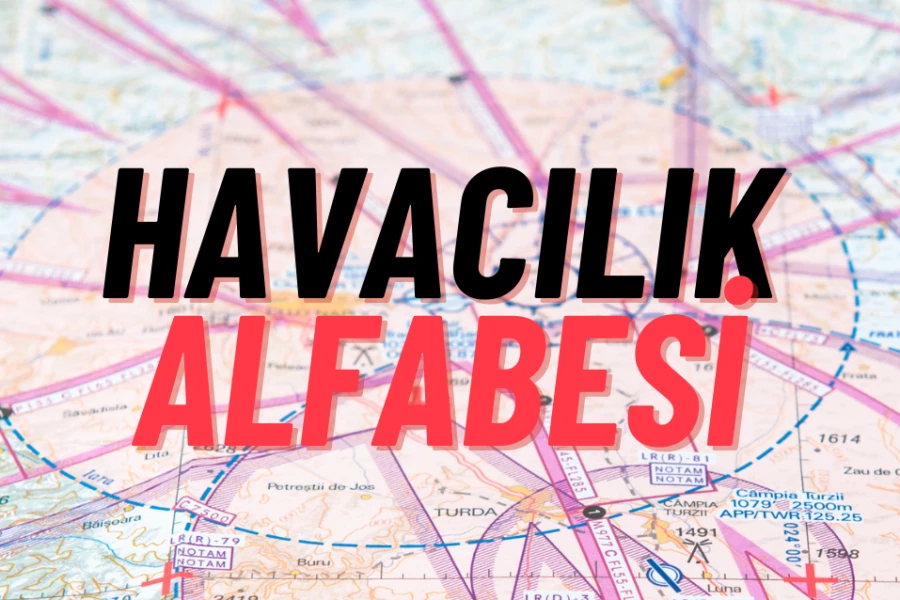- TRAINING
- 1 year before
Aviation Alphabet, History and Reading of Letters
What is the alphabet used in aviation? Information on the reading, examples and history of the aviation alphabet used by ICAO awaits you .
-

- 1 year before
- Category: TRAINING
- Published: 04/08/2023

Tens of thousands of aircraft are in the sky every day. Airborne aircraft communicate by radio with one to another and the tower staff who manage that airspace. For this reason, the aeronautical alphabet is a language system used for the organization and understanding of air traffic. In this alphabet, letters and numbers are represented by specific words, providing a clear and understandable language during radio communication. Especially it plays a big role in communication between aircraft and with air traffic control units. In this article, we will examine the aviation alphabet, its use and basic terms.
Why Use the Aeronautical Alphabet?
The aeronautical alphabet was developed to avoid the confusion that can occur in radio communications. In areas with high air traffic intensity, many aircraft and control units communicate simultaneously. Due to noise, static or accent differences, letters and numbers can sometimes be misunderstood. The aviation alphabet is a standardized language system developed with the aim of providing clear and understandable communication.
The ICAO Alphabet (International Civil Aviation Organization Alphabet) Aviation alphabet is a system adopted by the International Civil Aviation Organization (ICAO), which sets international standards. The ICAO alphabet is the alphabet used to clearly express letters and numbers during radio communication.
How to Use the ICAO Aviation Alphabet
The ICAO aviation alphabet represents letters and numbers with standard words. The aviation alphabet, also known as the NATO alphabet, has 26 letters. Each letter or number in the NATO alphabet is paired with a special word, and communication is made according to this word. For example:
A: Alpha
B: Bravo
C: Charlie
D: Delta
E: Echo
F: Foxtrot
G: Golf
H: Hotel
I: India
J: Juliet
K: Kilo
L: Lima
M: Mike
N: November
O: Oscar
P: Papa
Q: Quebec
R: Romeo
S: Sierra
T: Tango
U: Uniform
V: Victor
W: Whiskey
X: X-ray
Y: Yankee
Z: Zulu
Aviation Alphabet Word Examples
ATA: Alpha — Tango - Alfa
BLUE: Bravo — Lima AIR: Alpha — India - Romeo
IST: India Sierra - Tango
ANKA: Alfa November Kilo Alpha
Basic Aviation Alphabet Terms
Roger: Used to indicate that I have received and understood your message.
Wilco: Used to indicate that I have received your message, understand it, and will follow the instructions.
Squawk: It is said when the aircraft is asked to change its transponder code or use a specific code.
Mayday: Means emergency and is used by an aircraft that is in serious danger.
Pan-Pan: Used by an aircraft that is not serious, but requires assistance.
What does Alpha Tango mean?
In the
History of the Aviation Alphabet
The history ofthe aviation alphabet is based on the process of creating a standard coordinated by the ICAO (International Civil Aviation Organization). The aviation alphabet was first proposed by the ICAO in 1951 and later adopted in 1952. The Aviation Alphabet is also used by NATO and is also known as the NATO alphabet.
The aeronautical alphabet is a critical element that ensures effective and orderly communication between aircraft and control units. Correct and understandable communication is essential for flight safety, and the aviation alphabet serves this purpose.
Remember, by learning the aviation alphabet, understanding and contributing to aviation-related radio communications is extremely important for flight safety and efficiency.


Write Comment